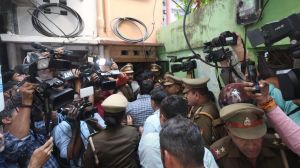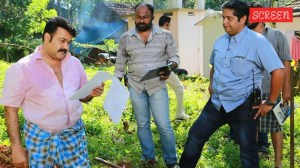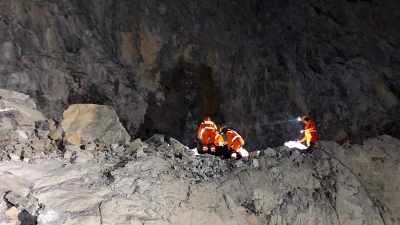At the height of tensions between India and China following the June 15 incident in Galwan Valley where 20 Indian Army personnel were killed in clashes with Chinese troops, US Secretary of State Michael R Pompeo spoke to External Affairs Minister S Jaishankar, The Sunday Express has learnt. Read | Facing long haul at LAC, Army’s big challenge: Logistics
The phone call by Pompeo, sources said, was made about 10 days ago and the conversation revolved around Washington’s support to New Delhi at that time of crisis.

Since March, Jaishankar and Pompeo had spoken to each other on at least three occasions, but this was their first conversation after the Galwan Valley incident.
Story continues below this ad
Sources said information about the call was not made public for “strategic reasons” since India and China were in the middle of military and diplomatic talks — the second meeting of the Corps Commanders took place on June 22 and the Working Mechanism for Consultation & Coordination on India-China Border Affairs (WMCC) met on June 24.
Read | Chinese apps banned, Govt calls homegrown ones to rise to challenge
Washington’s statement on June 17, two days after the Galwan Valley incident, was seen as neutral in tone. “We are closely monitoring the situation between Indian and Chinese forces along the Line of Actual Control. We note the Indian military has announced that 20 soldiers have died, and we offer our condolences to their families. Both India and China have expressed a desire to de-escalate, and we support a peaceful resolution of the current situation,” a spokesperson for the US State Department had said.
But US statements in the last 10 days have seen calibration, reflecting a more vocal support. And Pompeo has been leading from the front. On July 1, briefing reporters in Washington DC, he welcomed the Indian government’s decision to ban 59 Chinese apps.
Story continues below this ad
Read | ‘PM must follow raj dharma… India should tell China to retreat’
“We welcome India’s ban on certain mobile apps that can serve as appendages of CCP’s surveillance state. India’s clean app approach will boost India’s sovereignty, will also boost India’s integrity and national security, as the Indian government itself has stated,” he said.
The US has conveyed, publicly and privately, its steadfast support to South Block amid the tensions along the LAC. This has been matched by optics and some substantive cooperation at the operational level too.
Story continues below this ad
The Sunday Express has learnt that the Indian side has got a “good sense” of the build-up of troops and weapons on the Chinese side of the LAC because of the close information-sharing cooperation with the US.
Read | PM Narendra Modi launches app innovation challenge to promote homegrown apps
“India and the US have a robust defence cooperation, and this has been visible in the deployment of US platforms in the current situation along the LAC,” a top source told The Sunday Express – the “platforms” refer to US-built aircraft being flown by the IAF.
While President Donald Trump and Prime Minister Narendra Modi had spoken on June 2, before the Galwan Valley incident, Pompeo’s phone conversation with Jaishankar (after the clash) is learnt to have smoothened the hierarchy workflow in Delhi and Washington.
Story continues below this ad
The active cooperation in practical terms has also been accompanied by some high-voltage optics. Two US aircraft carriers kicked off joint exercises in the Philippine Sea last Sunday, a week after the USS Nimitz and the USS Theodore Roosevelt conducted their own joint operations in the area. It is rare to see three US aircraft carriers operating at the same time in the Western Pacific, and even more unusual to have separate dual-carrier exercises so close to each other.
Read | Ladakhis raising voice against Chinese intrusion; ignoring warning will cost India: Rahul Gandhi
The series of statements in the last two weeks from Washington, after the seemingly initial neutral statement, has been noted by South Block as well.
This week, the White House spokesperson said President Trump believes that China’s “aggressive stance” against India and other countries in the region confirms the “true nature” of the ruling Communist Party of China.
Story continues below this ad
On July 2, US State Department’s Deputy Secretary of State Stephen E Biegun met India’s Ambassador to the US, Taranjit Singh Sandhu, and conveyed his country’s support to New Delhi.
Don’t miss from Explained | Why notions of Chinese military invincibility defy reality
The US State Department said Biegun met Sandhu at the Indian embassy in Washington DC to “discuss the US-India Comprehensive Global Strategic Partnership, which remains resolute & resilient as we advance our shared goals in the Indo-Pacific region and beyond”.
Meanwhile, Modi Saturday night greeted Trump via a Twitter post: “I congratulate @POTUS @realDonaldTrump and the people of the USA on the 244th Independence Day of the USA. As the world’s largest democracies, we cherish freedom and human enterprise that this day celebrates. @WhiteHouse.”
Story continues below this ad
Trump responded with another tweet: “Thank you my friend. America loves India!”

 Since March, Jaishankar and Pompeo had spoken to each other on at least three occasions, but this was their first conversation after the Galwan Valley incident. (File Photo)
Since March, Jaishankar and Pompeo had spoken to each other on at least three occasions, but this was their first conversation after the Galwan Valley incident. (File Photo)






